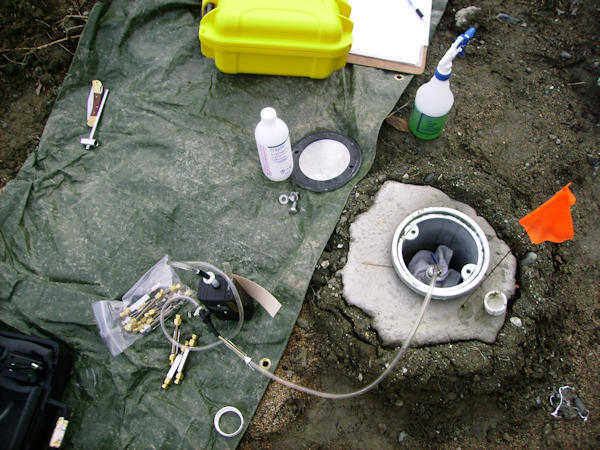Site Investigation
Phase I and Stage I Environmental Site Assessment (ESA)
Environmental Site Assessment reports are prepared for a real estate holding in order to identify potential or existing environmental contamination liabilities. These preliminary reports are an important tool for property owners, investors, realtors, lenders, financial institutions and more. A Phase I ESA consists of:
- Visual inspection of the subject and adjacent property;
- Review of historical public and private databases, archives, aerial photos, and interviews to determine the historical use of the property; and
- Review of local and regional physical parameters.
This information is then used to determine any areas of potential environmental concern, and is used to make recommendations regarding the property.
Columbia has completed hundreds of Phase I ESAs ranging from local gas stations to remote areas in the NWT, like this highway storage yard which contained over 500 full and empty fuel drums and miscellaneous construction materials.
Phase II and Stage II Environmental Site Assessment (ESA)
A Phase II ESA is undertaken if a properly executed Phase I report has identified Areas of Potential Environmental Concern (APEC). The objective of a Phase II ESA is to:
- Confirm the presence or absence of contaminants; and
- Characterize the type, quantities, and concentrations of these substances with respect to applicable Federal or Provincial environmental criteria.
The Phase II ESA is completed using intrusive methods to investigate both surface and subsurface impacts to environmental media. The investigation can include the collection of soil, surface water, sediment, groundwater, soil vapour, rock, and building material samples. These samples can be collected from structures, test pits, grab samples, boreholes, monitoring wells, and soil vapour probes as an example.
Columbia has worked in many remote and ecologically sensitive locations, and used many different innovative approaches to get the necessary data in the most cost effective and environmentally friendly way.
Phase III Environmental Site Assessment (ESA) & Detailed Site Investigation (DSI)
When contamination has been identified it is a necessity to know its size, type, and extent before moving forward in the decision making process. The purpose of the Phase III ESA and Detailed Site Investigation is to delineate and classify the areas of concern, remove any existing data gaps, and determine the potential risk to human health and the environment before proceeding to risk management or remediation options. The key components of a Phase III ESA are:
- Delineation of identified contaminants of concern in soil, groundwater, surface water, sediments, etc;
- Calculate the volume of impacted materials;
- Determine pathways of movement or migration of contaminants to investigate “fate and transport” to model in a Risk Assessment; and
- Development of feasible Remedial Options and a site specific Remedial Action Plan.
You can count on Columbia to provide you with a high quality, cost effective product that is based on full compliance with all appropriate environmental regulations.










